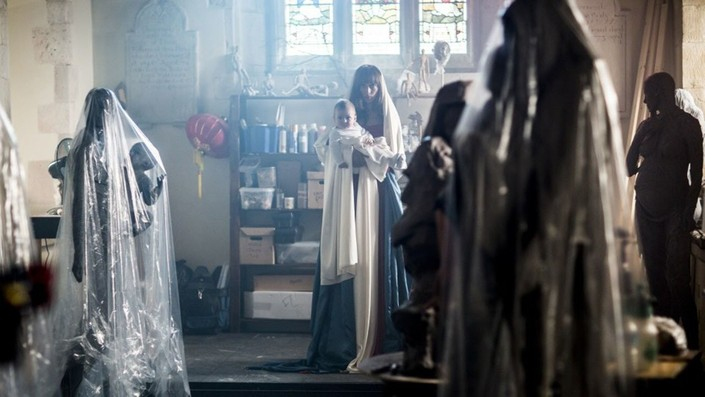Don’t Knock Twice (2016)

Unlocking the Horror: A Comprehensive Introduction to Don’t Knock Twice (2016)
Don’t Knock Twice (2016) is a supernatural horror film that blends psychological terror, urban legend, and maternal redemption into a chilling cinematic experience. Directed by Caradog W. James and written by Mark Huckerby and Nick Ostler, the film explores the dark consequences of a mother’s desperate attempt to reconnect with her estranged daughter, only to unleash a malevolent supernatural force. With its eerie atmosphere, grounded performances, and folklore-driven narrative, Don’t Knock Twice stands out as a haunting entry into 2010s horror cinema.
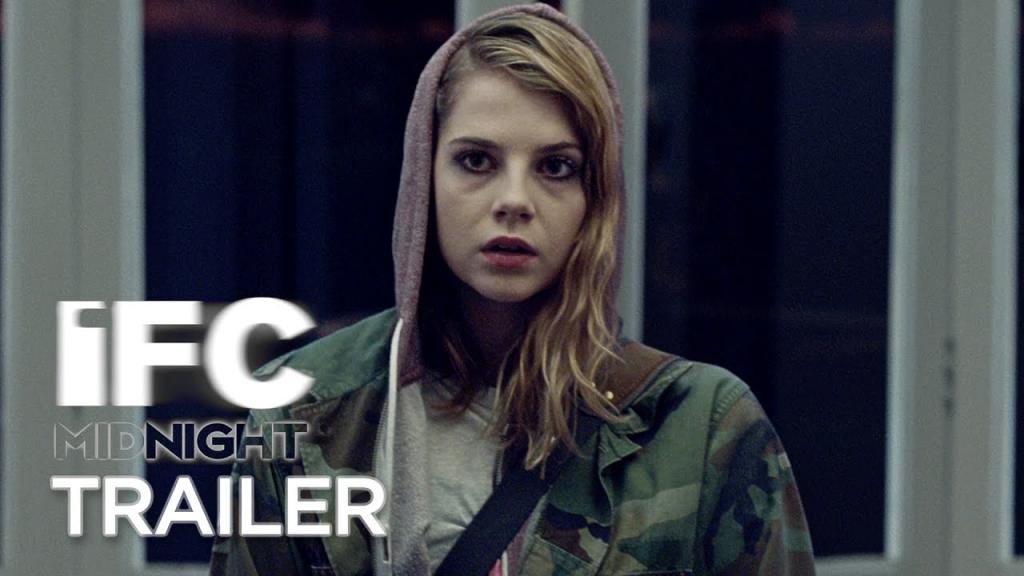
Plot Overview
Set against the bleak backdrop of suburban England, the story follows Jess (played by Katee Sackhoff), a successful sculptor and recovering addict, who seeks to rebuild her relationship with her teenage daughter Chloe (Lucy Boynton). Years earlier, Jess gave up custody of Chloe, a decision that has left both women scarred. When Chloe runs away from her foster home and turns to Jess for help, their reunion is anything but peaceful.
Chloe becomes the target of a terrifying curse tied to a local urban legend. According to the myth, if someone knocks twice on the door of an abandoned house — once to wake the witch, and once to summon her — they’ll be hunted by a demonic spirit. Chloe and her friend Danny tempt fate by performing the ritual, and soon after, Danny vanishes under mysterious and violent circumstances.
As the supernatural occurrences escalate, Jess must protect Chloe from the entity known as Baba Yaga — a witch from Slavic folklore twisted into a vengeful force in this narrative. The film unfolds with Jess confronting not only a malevolent spirit but also her inner demons and guilt. The line between psychological trauma and true haunting blurs as mother and daughter are drawn deeper into a nightmarish mystery that challenges their bond and their grip on reality.

Themes and Symbolism
Don’t Knock Twice delves deeply into themes of motherhood, abandonment, redemption, and belief. Jess’s struggle to prove her love and commitment to Chloe after years of absence mirrors her fight against an invisible, malevolent force — symbolizing the internal guilt and pain she carries.
The film also explores how folklore and urban legends function as cautionary tales rooted in fear, trauma, and repression. The legend of Baba Yaga is reimagined not just as a ghost story, but as a metaphor for the inescapable consequences of past actions. The idea that belief fuels the power of the supernatural is a recurring motif, suggesting that faith — whether in legends, loved ones, or oneself — can both destroy and redeem.

Visual Style and Direction
Director Caradog W. James, known for his work on The Machine (2013), brings a cold, atmospheric tone to Don’t Knock Twice. The film’s visuals are marked by stark contrasts, shadowy interiors, and unsettling imagery that evokes unease even in the mundane. The cinematography emphasizes claustrophobic interiors and the isolating spaces between characters, reinforcing the themes of separation and mistrust.
Sound design plays a key role in building suspense, with creaking doors, whispered voices, and sudden silences amplifying the tension. Composer James Edward Barker’s haunting score further immerses the audience in a world where every knock, creak, and shadow might signal doom.
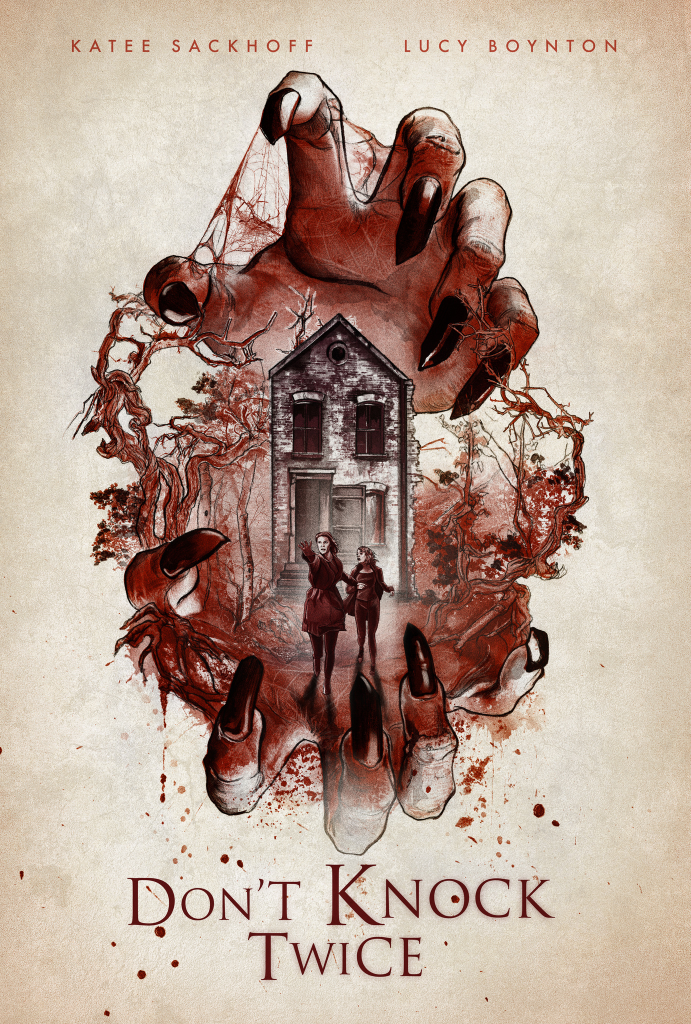
Performances
Katee Sackhoff delivers a grounded and emotional performance as Jess, infusing the character with vulnerability and strength. Her portrayal avoids horror film clichés, opting instead for a nuanced depiction of a flawed but determined mother. Lucy Boynton shines as Chloe, capturing the confusion, fear, and defiance of a teenager caught between resentment and a desire for safety.
Supporting roles, including Javier Botet as the witchlike entity, bring a sense of otherworldly terror that elevates the supernatural aspects of the film.
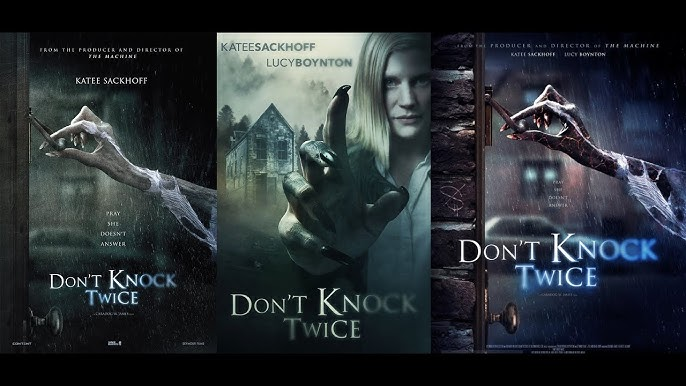
Reception and Legacy
Upon its release, Don’t Knock Twice received mixed-to-positive reviews from critics and audiences. While some praised its atmosphere and performances, others noted that the plot relied on familiar tropes. However, many appreciated the film’s attempt to infuse deeper emotional resonance into a genre often criticized for superficial scares.
In the years since its release, Don’t Knock Twice has gained a modest cult following among fans of supernatural horror. It also inspired a VR video game of the same name, released in 2017, which allowed players to experience the horror from a first-person perspective — expanding the film’s eerie universe.
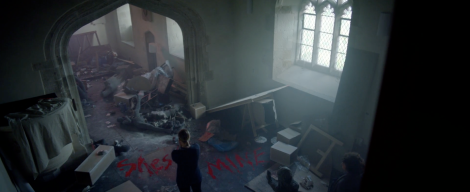
Conclusion
Don’t Knock Twice is a thought-provoking horror film that blends scares with psychological depth. While it plays with familiar ghost story conventions, it carves out its own identity through strong performances, an emotionally resonant core, and a haunting reimagining of folkloric terror. Whether you’re a horror aficionado or a casual viewer looking for a layered supernatural thriller, this film offers more than just jump scares — it’s a journey into the shadows of grief, guilt, and the enduring power of a mother’s love.
